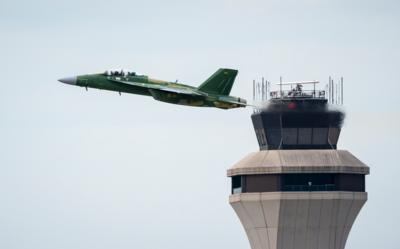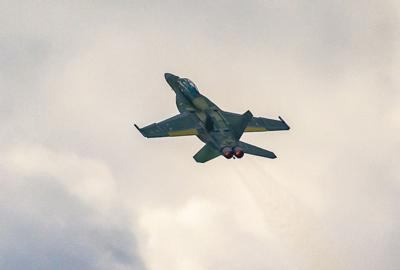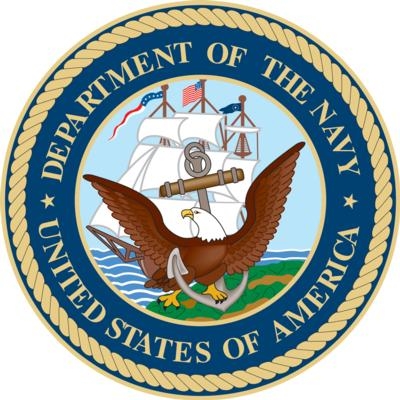Block III’s Boast An Increased Service Life Of 10,000 Flight Hours
They've been waiting for these airframes for a while... and now the Navy is welcoming its next generation multi-mission tactical fighter by taking delivery of the first Block III F/A-18 Super Hornet test jets this month, as part of its continuing effort to improve aircraft lethality, survivability, interoperability and sustainability in an ever-evolving threat environment.

Like every aircraft slated for the fleet, The Boeing Company-produced two-seat model (F287) and single-seat (E323) will undergo comprehensive testing. At Naval Air Station (NAS) Patuxent River, Maryland, Air Test and Evaluation Squadron (VX-23) will perform shore-based carrier testing and focus mainly on the hardware and aeromechanical aspects of test with the F model. At VX-31, located at Naval Air Weapons Station China Lake, California, teams will examine software functionality and network architecture, explained Capt. Mike Burks, F/A-18 E/F deputy program manager.
He added that once testing is complete at VX-23, the two-seated model will ferry to VX-31 to complete Block III flight testing.
“Now it’s up to our test squadrons and our integration team to verify requirements are met and ensure the engineering behind the Block III is validated prior to full-scale production and delivery of the Block III to the fleet,” said Burks.
While the jet’s exterior appearance is largely unchanged, Block III’s increased service life of 10,000 flight hours and reduced radar signature are accompanied by a new avionics suite that brings the Common Tactical Picture into the cockpit. Aircrew will also find an Advanced Cockpit System, with large touchscreen displays for improved user interface and more powerful computing through the Distributed Targeting Processor Network and Tactical Targeting Network Technology.

F/A-18 & EA-1G Program Manager (PMA-265) Capt. Jason Denney recalled Block III started as an unconventional acquisition program in support of maintaining improved aviation readiness and speed to the fleet initiatives as the Navy revamped its roadmap.
After leveraging nearly two decades worth of cost and production data, the award-winning NAVAIR contracts team was able to expeditiously award a roughly $4 billion multiyear procurement contract to Boeing in March 2019. For taxpayers, this provides significant cost savings in the form of bulk purchasing and long-range planning that capitalizes on existing production lines that will allow the Navy to acquire a minimum of 24 strike fighters each year through fiscal year 2021.
In addition to the Block III delivery, Boeing will also perform Service Life Modification (SLM) to hundreds of Block II Super Hornets that extend their service lives and integrate Block III capabilities. SLM is key in building both the capacity and capability to ensure the Navy has jets ready to fight out into the mid-2040s.

“These new capabilities are essential for ensuring we maintain the tactical advantage in the Great Power Competition. Block III production and SLM for our Block IIs also demonstrate contracting efficiency and solid partnerships with industry,” said Denney. “An all-around win for the Navy, for Boeing, and for the warfighter.”
The first squadron deployment of Block III Super Hornet is anticipated in mid-2023, with a plan in place to have two Block III squadrons, composed of new production and Block IIs that have undergone SLM, accompanying each Carrier Air Wing by 2027.
“It’s been an outstanding effort by thousands of people throughout the Navy and industry across America to reach this milestone, and their work is far from done,” said Denney.
“I have no doubt that the test squadrons and flight test engineers are eager to put these jets through their paces and make sure we’re bringing a highly capable and adaptable platform to the fleet with Block III.”
 ANN's Daily Aero-Term (04.25.24): Airport Rotating Beacon
ANN's Daily Aero-Term (04.25.24): Airport Rotating Beacon ANN's Daily Aero-Linx (04.25.24)
ANN's Daily Aero-Linx (04.25.24) Klyde Morris (04.22.24)
Klyde Morris (04.22.24) Airborne 04.24.24: INTEGRAL E, Elixir USA, M700 RVSM
Airborne 04.24.24: INTEGRAL E, Elixir USA, M700 RVSM Airborne 04.22.24: Rotor X Worsens, Airport Fees 4 FNB?, USMC Drone Pilot
Airborne 04.22.24: Rotor X Worsens, Airport Fees 4 FNB?, USMC Drone Pilot





